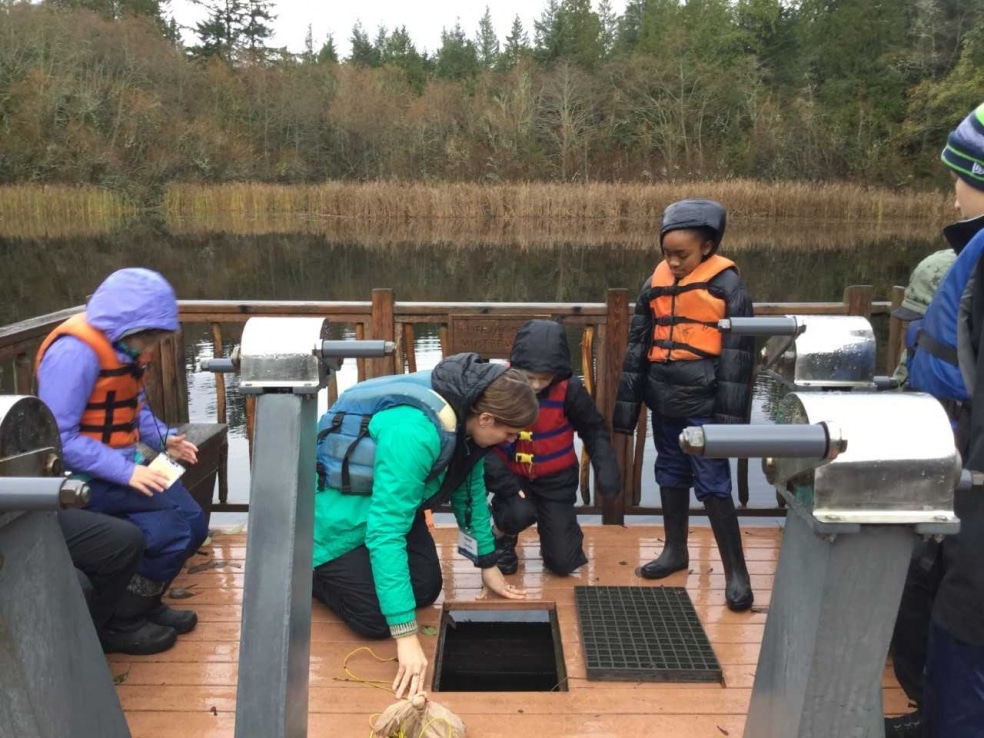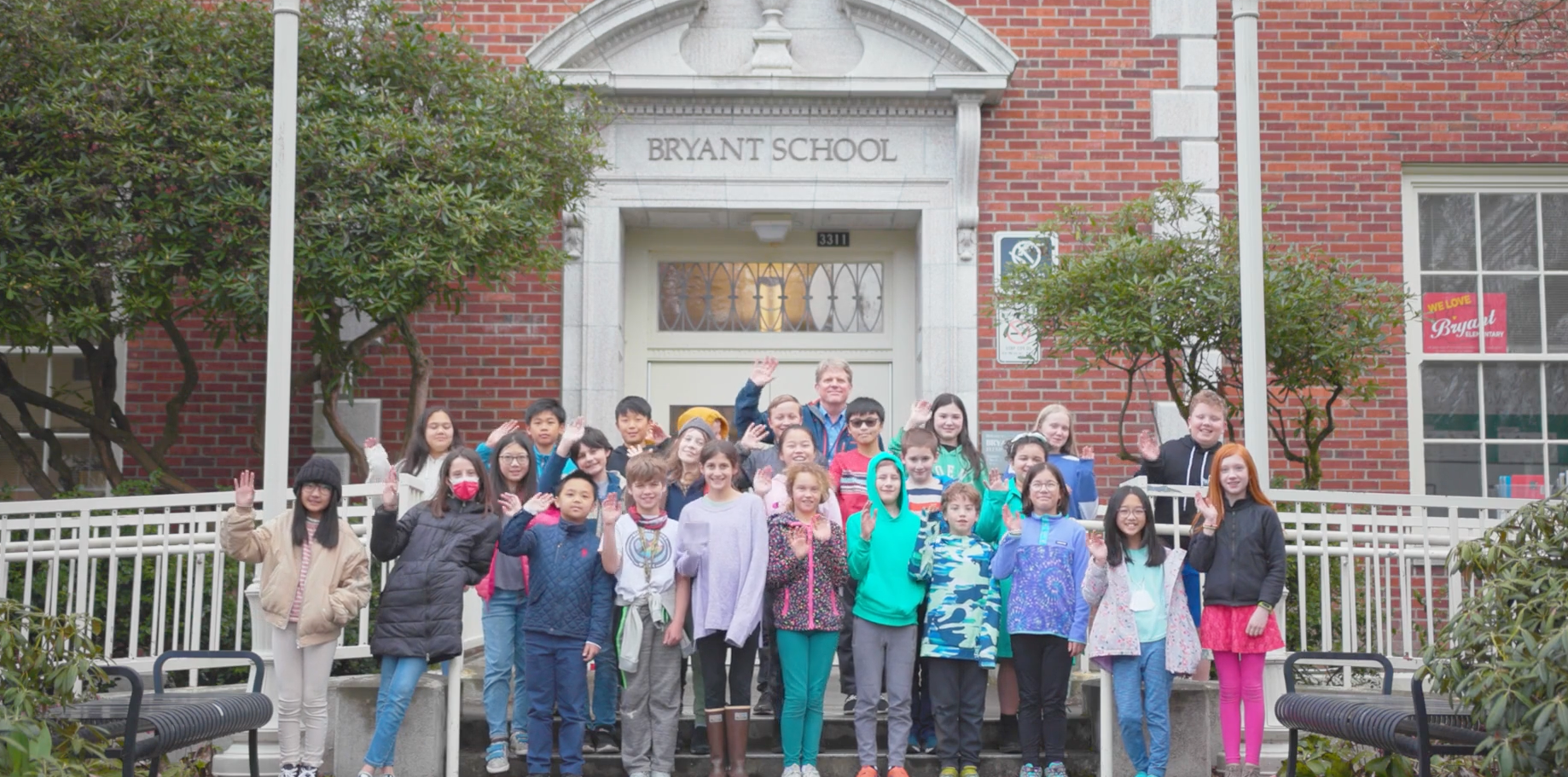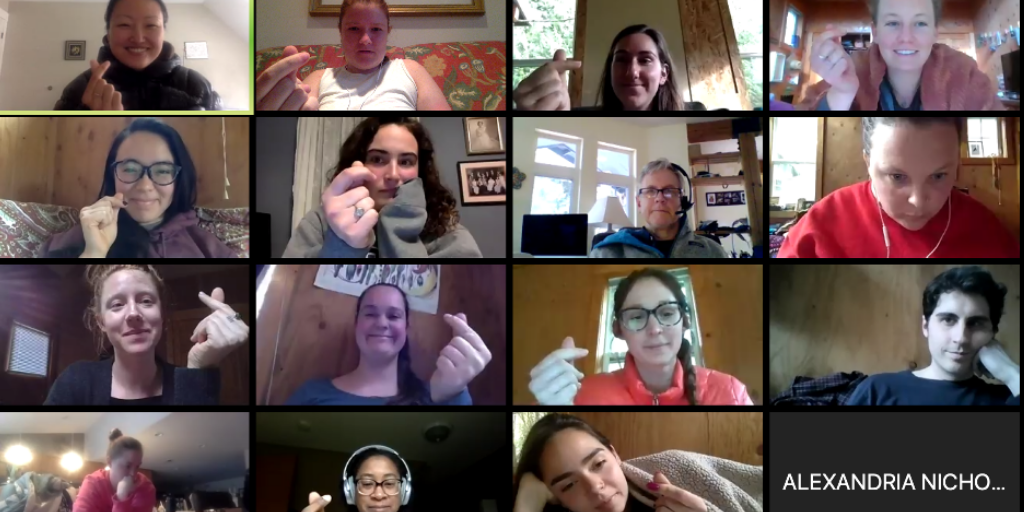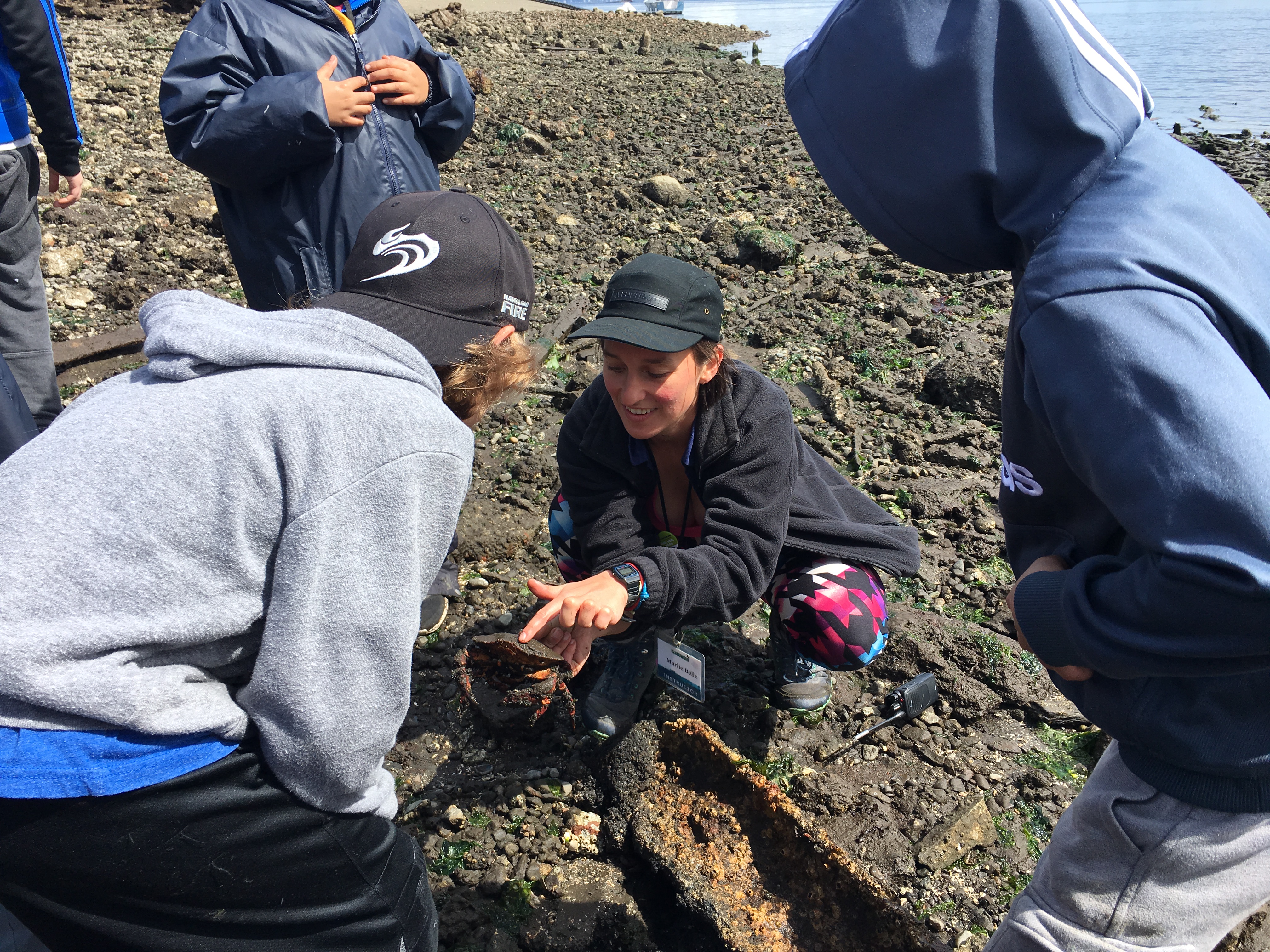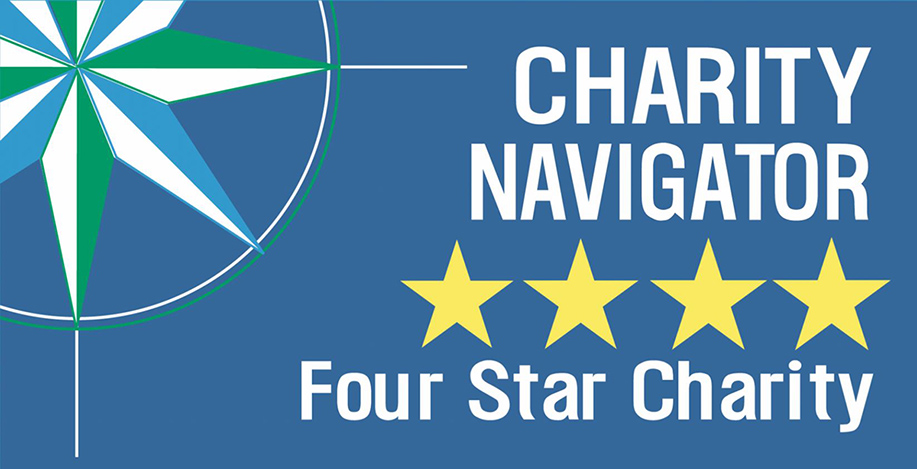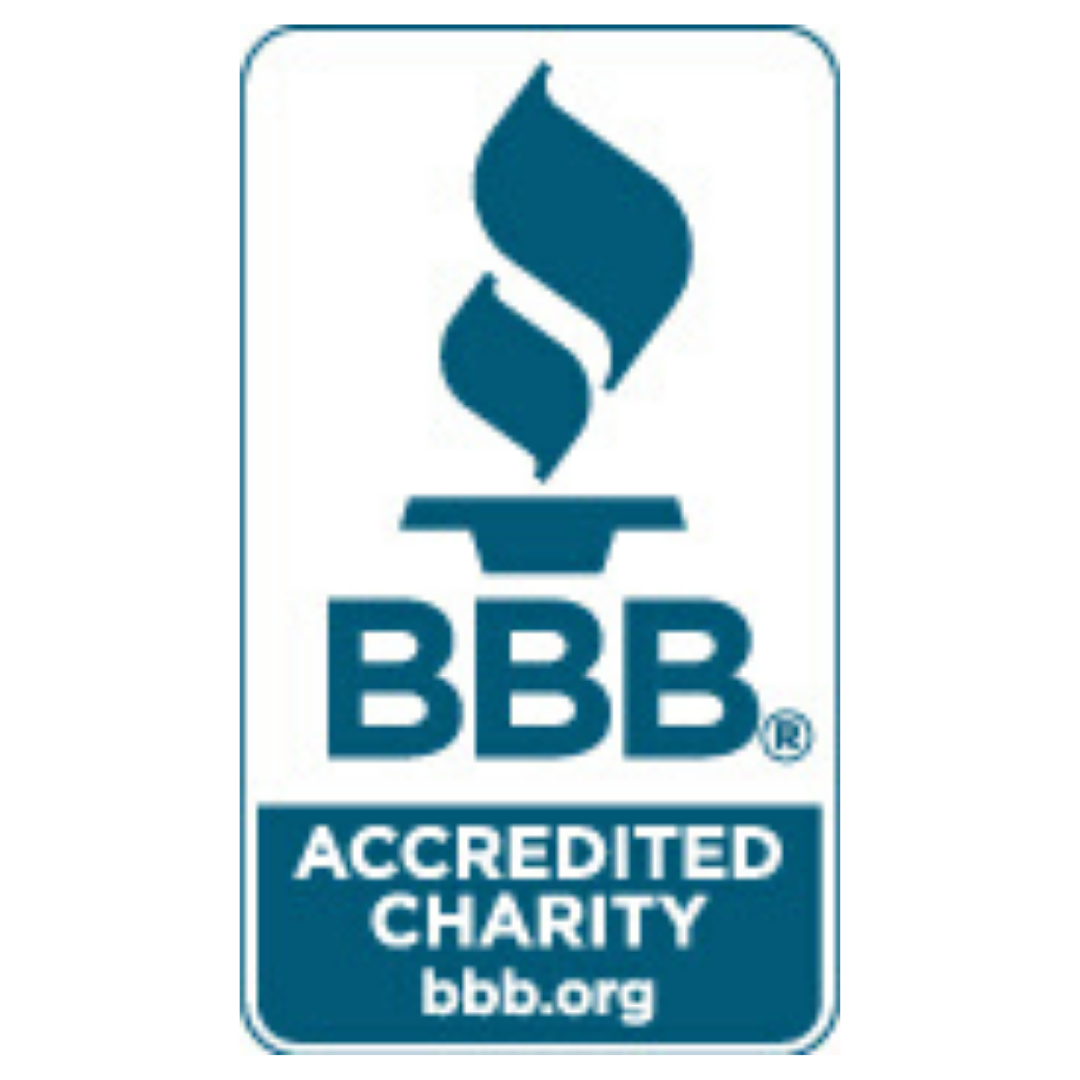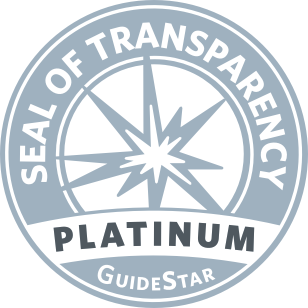Bryant Elementary was one of the schools included in our pilot program of the School…
Author: Caroline Bargo
The floating classroom isn’t quite a boat. It has the double hull of a pontoon boat one might expect a fisherman to dangle his hook over on a lazy afternoon, but instead of oars or a motor, four student-powered pedals propel it slowly over the water at Mac’s Pond. You may catch a group onboard looking for macroinvertebrates in the water below or examining birds swooping overhead. For almost every student I’ve encountered during my time instructing in the School Overnight Program, it’s one of the most intriguing things they experience. This week was no different.
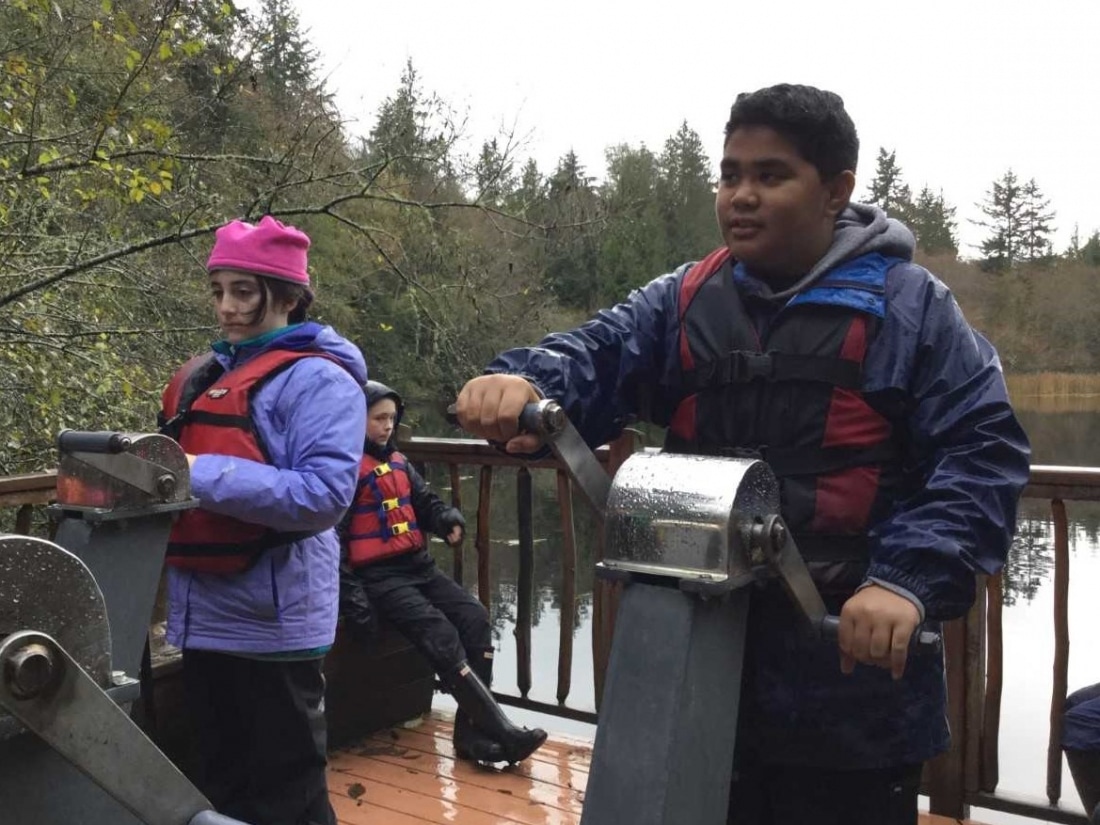
School Overnight Program students power the Floating Classroom.
Team Cloud made its way down to the pond on a walk. Students observed the floating classroom from shore and, instantly intrigued, they uttered the words that made my heart sing, “I wonder…” They dove into their wonders with gusto: I wonder where the water comes from. Are there fish? I wonder where the water goes. I wonder if people swim in there. We talk in our graduate classes about investigable questions, and as I tried to steer them toward a question that they could use tools available on campus to answer, they continued to return to the question of “I wonder how deep the pond is in the middle.” This was an intriguing question to all of us, including me, as I too had no idea how deep the pond was. They kept asking me if I knew, and all I had to offer were rumors from staff members.
As I go through my own classes here at the Education for Community and Environment graduate program at IslandWood, I am often encouraged to incorporate new practices into my teaching. One of the things I’d been excited to try is the student-directed investigation. During our science methods class we discussed this type of investigation, in which students come up with the question, procedure, and data collection methods, discuss their findings, and draw conclusions. Investigable questions posed by students are the key to student-directed investigations, because when students show true interest in something, they are often more motivated to put in the work of fulfilling their wonders. I had had luck with investigations before, but it had always felt more like my investigation, rather than the students’. Sometimes they became interested in the question I posed, but I was taken by the idea that they might genuinely want to find an answer to questions they ask. If I could help them do that, all the better.
So Team Cloud had their question for the week: How deep is Mac’s Pond? I was so excited. My next step was to put the investigation into motion. I went into the prep room where all of our School Overnight Program educational supplies are held and told my fellow graduate students and staff instructors what our question was. I joked that we were going to fill a bag full of rocks and drop it off of the side of the floating classroom… but that’s exactly what we ended up doing. With the help of staff and grads alike, I gathered supplies for the next day, including a plastic grocery bag, a carabiner, and a piece of rope with a mark every foot.
The next day, Team Cloud headed down to the pond shelter, and I asked them to come up with their procedure. I had drawn a map of the pond and asked them how we should denote where the middle of the pond was, how we would measure the distance below the floating classroom, and how we would record our findings. I kept my stash of supplies hidden until my students had brainstormed as far as they could, and then presented my materials strategically. “We could tie a rope onto a rock!” exclaimed one student. “We could do that but…” I said and threw the plastic bag up into the air and watched as it made its way slowly to the ground. In unison they all agreed that we could put the rock in the bag, and it would be much more secure.
They went through this process for each part of the investigation. At first, we decided to use feet as a unit of measurement to denote how far away we were from the dock. We soon realized, however, that it was much easier to use a “crank” as a unit of measure. A crank is simply one revolution of the pedals that students turn to move the floating classroom. We designated a “crank counter” who counted each revolution, and we set out for the buoy in the middle of the pond. When we reached it, we would drop the bag of rocks held by the carabiner tied to the rope down and wait until we could feel the rope slacken, which would mean the rocks had hit the bottom. Then I would pull the rope taut, and we would count how many feet the rope had gone down into the water. We decided that we needed three points of measurement, so we added a spot halfway between the buoy and the dock and a spot right off of the dock. This also allowed us to find the slope of the pond, although it was a very simple representation.
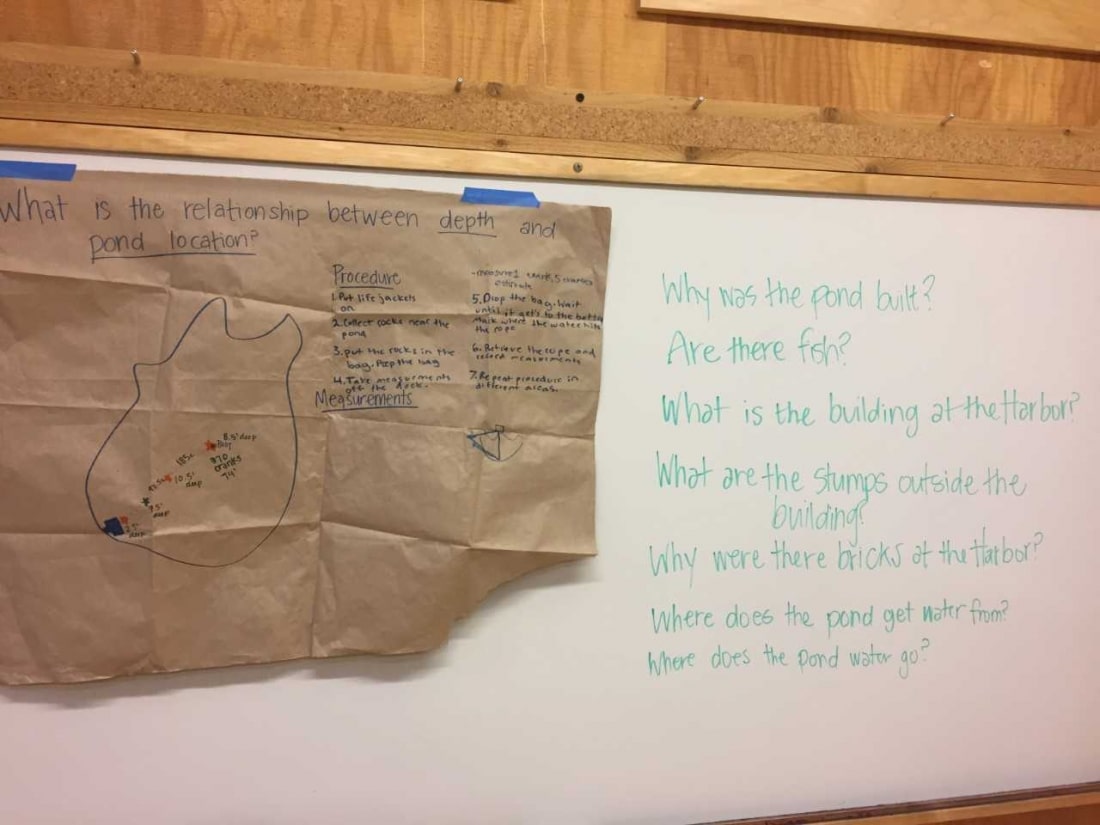
Notes on a white board and on a piece of construction paper recording observations about Mac’s Pond.
As we went through the measuring process, time after time my students made adjustments to the procedure when we encountered trouble and used math skills they were learning at school. I was ecstatic! We ended up with an infographic of the pond showing the different depths along the path of the floating classroom. My students were so proud. They answered a question that they really wanted to know, designed procedures that made sense to them, and had a great time doing it.
Running through a student-directed investigation was a highlight of my fall quarter. It felt like the culmination of my own classes at IslandWood. Taking my students’ interests into account, pushing them to find an investigable question, and giving them agency to determine procedure was exhilarating and something I can’t wait to tweak in different iterations with different groups during winter and spring.
Caroline Bargo is a student in IslandWood’s Graduate Program, offered in partnership with the University of Washington College of Education. Learn more about the program here.

